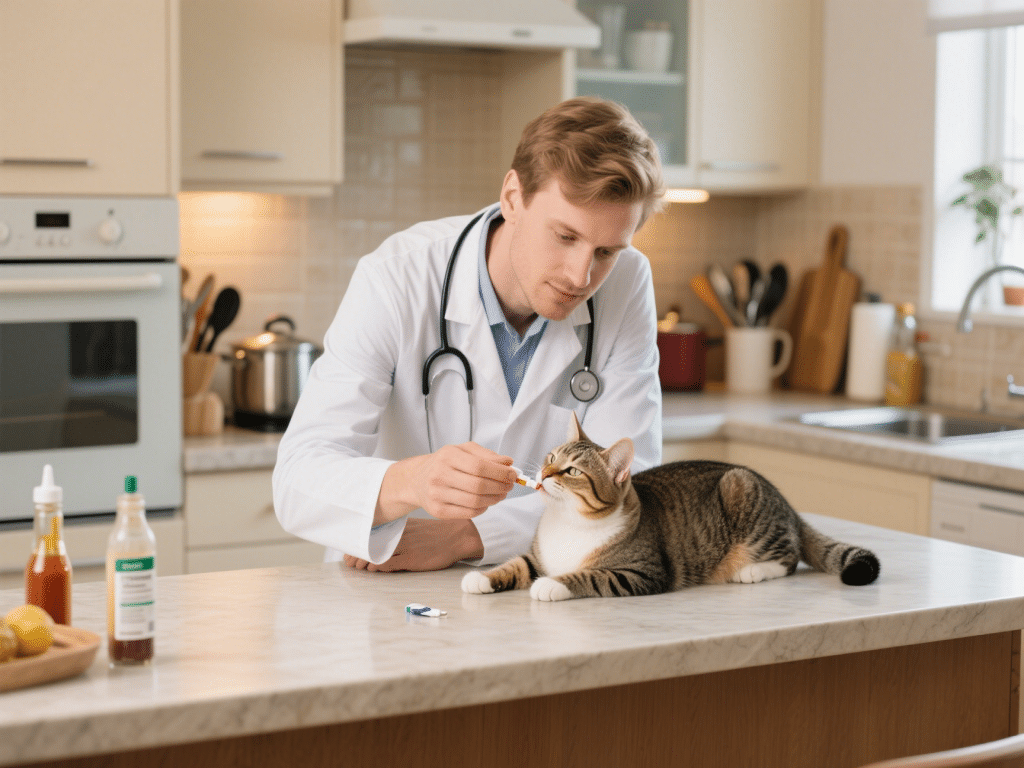Top Safe Deworming Methods for Indoor Cats: Effective Parasite Prevention
Introduction
Indoor cats are often perceived as less susceptible to parasites, but they can still contract intestinal worms through household insects or contaminated surfaces. Regular deworming is crucial to prevent health issues like weight loss, diarrhea, and nutrient deficiencies. This guide outlines safe, effective methods to deworm indoor cats, ensuring parasite prevention without compromising your cat’s well-being.
1. Consult Your Veterinarian First
Fecal Examination: A trained veterinarian will examine stool samples to determine the presence and type of worms (roundworms, tapeworms, hookworms, etc.).
Customized Treatment Plan: Dosage and frequency must be tailored to your cat’s age, weight, and overall health. Always follow professional guidance rather than over-the-counter recommendations.
2. Oral Deworming Tablets and Suspensions
Broad-Spectrum Dewormers: Pyrantel pamoate and praziquantel-based formulas target common intestinal parasites.
Administration Tips:
Administer with a treat or crushed into wet food for picky eaters.
Use a pill popper if necessary, ensuring minimal stress.
Safety Profile: These medications have been extensively tested and are approved for indoor cats. Minor side effects may include mild vomiting or lethargy; contact your vet if symptoms persist.
3. Topical (Spot-On) Deworming Solutions
Dual-Action Formulas: Many topical treatments combine flea prevention with intestinal parasite control (e.g., selamectin-based products).
Ease of Use: Apply directly to the skin at the back of the neck once a month. No need for ingestion, reducing stress for sensitive cats.
Precautions: Ensure the cat does not groom other pets immediately after application to prevent cross-contamination.
4. Natural and Herbal Supplements (Adjunctive Use)
Pumpkin Seeds & Diatomaceous Earth: Anecdotal evidence suggests these ingredients may support gut health and create an unfavorable environment for worms.
Constraints: While generally safe, these supplements should not replace veterinarian-recommended medications. Always verify dosages and purity with a veterinary professional.
5. Monitoring and Follow-Up
Post-Treatment Fecal Checks: Schedule a follow-up fecal exam 2–3 weeks after treatment to confirm parasite elimination.
Behavioral Observation: Regularly monitor appetite, stool quality, and weight. Any sudden changes warrant prompt veterinary attention.
Conclusion
Indoor cats benefit significantly from scheduled, veterinarian-approved deworming protocols. By combining oral medications, topical treatments, and responsible monitoring, cat owners can ensure their indoor felines remain parasite-free and healthy. Regular check-ups and fecal exams are vital to long-term parasite prevention.
RECOMMENDED NEWS

Top Safe Deworming Methods for Indoor Cats: Effective Parasite Prevention
2025-11-04

The Quiet Signs Your Dog Might Be in Pain
2025-11-02

Pet Massage Basics: Relaxation Techniques for Cats and Dogs
2025-11-02

Decoding Dog Behavior: Master Your Pet’s Body Language Signals
2025-11-05

How to Prepare for a New Pet: A Checklist for New Pet Owners
2025-11-05

How to Choose the Best Pet Supplies: A Comprehensive Buyer’s Guide
2025-11-02
Comments on "Top Safe Deworming Methods for Indoor Cats: Effective Parasite Prevention" :